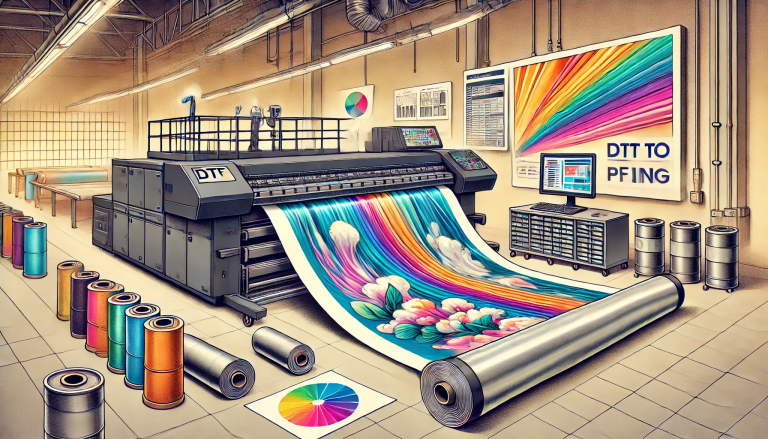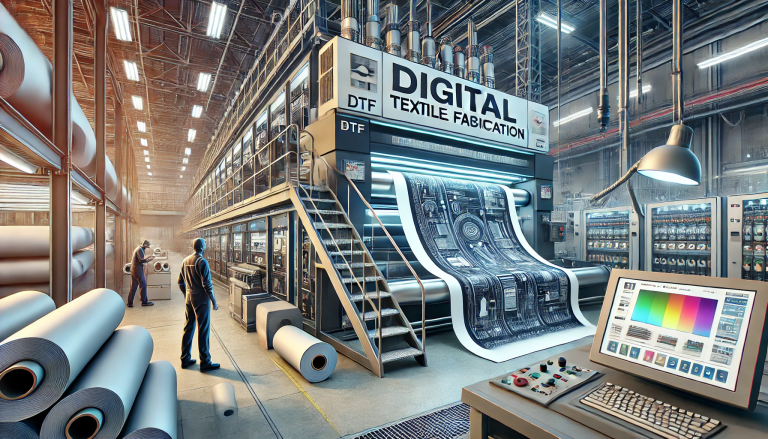“Experience the Difference with Is PET Film DTF Roll – The Perfect Solution for Screen Printing!”-MAXDTF-DTF Film A2 Supplier, A3 L1800 DTF Factory, made in china
Introduction
PET Film DTF roll is a type of printing process that is becoming increasingly popular in the printing industry. It is a great alternative to traditional screen printing, as it offers a number of advantages. This article will discuss the similarities and differences between PET Film DTF roll and screen printing, as well as the benefits of each. We will also discuss the best applications for each type of printing process. By the end of this article, you should have a better understanding of the differences between PET Film DTF roll and screen printing, and be able to make an informed decision about which printing process is best for your project.
Examining the Durability of PET Film DTF Roll and Screen Printing
The durability of PET film DTF roll and screen printing is an important factor to consider when selecting a printing method. PET film DTF roll and screen printing are two popular printing methods used in the printing industry. Both methods offer a variety of advantages, but it is important to understand the durability of each method before making a decision.
PET film DTF roll printing is a popular choice for printing on a variety of materials, including paper, plastic, and metal. This method is known for its durability and long-lasting results. The ink is applied to the material using a roller, which ensures that the ink is evenly distributed and adheres to the material. The ink is then cured with a heat press, which helps to ensure that the ink is properly bonded to the material. This method is also resistant to fading and scratching, making it a great choice for long-term projects.
Screen printing is another popular printing method that is used for a variety of materials. This method involves using a mesh screen to apply the ink to the material. The ink is then cured with a heat press, which helps to ensure that the ink is properly bonded to the material. Screen printing is known for its durability and long-lasting results. The ink is also resistant to fading and scratching, making it a great choice for long-term projects.
When selecting a printing method, it is important to consider the durability of the method. PET film DTF roll and screen printing are both durable methods that offer long-lasting results. Both methods are resistant to fading and scratching, making them great choices for long-term projects. It is important to consider the specific needs of the project before making a decision, as each method has its own advantages and disadvantages.
Comparing the Cost-Effectiveness of PET Film DTF Roll and Screen Printing
When it comes to cost-effectiveness, both PET film DTF roll and screen printing have their advantages and disadvantages. In order to determine which method is more cost-effective, it is important to consider the cost of materials, labor, and other associated costs.
The cost of materials for PET film DTF roll is typically lower than that of screen printing. This is because PET film is a relatively inexpensive material and does not require any additional inks or solvents. Additionally, the process of DTF roll is relatively simple and does not require any specialized equipment. As a result, the cost of materials for PET film DTF roll is typically lower than that of screen printing.
The cost of labor for PET film DTF roll is also typically lower than that of screen printing. This is because the process of DTF roll is relatively simple and does not require any specialized skills or training. Additionally, the process of DTF roll is typically faster than that of screen printing, which can help to reduce labor costs.
The cost of other associated costs for PET film DTF roll is typically lower than that of screen printing. This is because the process of DTF roll does not require any additional inks or solvents, which can help to reduce costs. Additionally, the process of DTF roll is typically faster than that of screen printing, which can help to reduce costs associated with production time.
Overall, PET film DTF roll is typically more cost-effective than screen printing. This is because the cost of materials, labor and other associated costs are typically lower for PET film DTF roll than for screen printing. Additionally, the process of DTF roll is typically faster than that of screen printing, which can help to reduce costs associated with production time. As a result, PET film DTF roll is typically the more cost-effective option when compared to screen printing.
Exploring the Benefits of PET Film DTF Roll vs. Screen Printing
When it comes to printing on textiles, there are two main methods: screen printing and direct-to-film (DTF) roll printing. Both methods have their advantages and disadvantages, and it is important to understand the differences between them in order to make an informed decision about which method is best for your project.
Screen printing is a traditional method of printing that involves using a mesh screen to transfer ink onto a substrate. This method is often used for large-scale projects, as it is capable of producing high-quality prints with a wide range of colors. However, it is also a labor-intensive process that requires a great deal of skill and experience to achieve the desired results. Additionally, the cost of screen printing can be quite high, as it requires specialized equipment and materials.
Direct-to-film (DTF) roll printing is a newer method of printing that uses a roll of PET film to transfer ink onto a substrate. This method is much faster and more cost-effective than screen printing, as it requires less specialized equipment and materials. Additionally, DTF roll printing is capable of producing high-quality prints with a wide range of colors. However, it is important to note that DTF roll printing is not suitable for all types of fabrics, as some fabrics may not be compatible with the PET film.
In conclusion, both screen printing and DTF roll printing have their advantages and disadvantages. Screen printing is a traditional method that is capable of producing high-quality prints with a wide range of colors, but it is also a labor-intensive process that requires a great deal of skill and experience to achieve the desired results. DTF roll printing is a newer method that is much faster and more cost-effective than screen printing, but it is not suitable for all types of fabrics. Ultimately, the decision of which method to use should be based on the specific needs of the project.
Conclusion
In conclusion, PET Film DTF roll is not the same as screen printing. While both processes involve the use of a film to transfer an image onto a substrate, the processes are different in terms of the type of film used, the method of application, and the end result. PET Film DTF roll is a more cost-effective and efficient method of transferring an image onto a substrate, while screen printing is a more traditional and labor-intensive process.




